After reading just one chapter of One Second After, the 2009 novel by William Forstchen, I found myself unexpectedly propelled into adopting the mindset of a prepper. And since the threat is finally in the news, I’ll share what I’ve found to be crucial in surviving long-term after an EMP attack on US soil.
For my next challenge, I’m going to take the steps outlined below to obtain what’s needed as well as develop a plan if an EMP attack hits the USA.

EMP ATTACK TIMELINE
Before we get into what you’ll need to survive an EMP attack, it’s important to think about the breakdown of society over time. Reading the EMP attack novel One Second After is a great start. Here’s what I understand will happen over 1 year.
- INSTANT SHUTDOWN – Several nuclear weapons are shot into space and detonated directly above a target country. There is no fallout, but instead, we get hit by an electromagnetic pulse that fries most electronics instantly and simultaneously. SIDE NOTE: My additional worry wasn’t addressed clearly in the book, but if our government saw nuclear weapons launched over the USA, wouldn’t they immediately retaliate against who they thought it might be? In the book, the 3 nukes are sent from random spots on cargo ships and non-descript launch locations, making it unclear who was responsible. I’d bet we’d launch at Russia or Iran as an excuse. I wouldn’t put it past those in charge. Then what happens? Our EMP issues don’t exist because we’ve started WWIII and nukes are landing everywhere. Or would our government wait to get confirmation of it being an EMP attack versus all out nuclear war? hmmmm….
- LOOTING – People initially think it’s a blackout. But when we realize that cars aren’t working anymore, and any portable electronics not on the grid are no longer of use, some initial panic may arise. That means looting. Of course, first the toilet paper, then everything else.
- Food and supplies will be the first to go. But unknown to most, those who survive on prescription medications will work on stockpiling. Violence will ensue as some pharmacies will defend prescriptions.
- MIGRATION – As water and food become more scarce, people will begin to migrate. Much of them will head out of cities to more rural areas, expecting there to be abundance of food and water. BUT, that’s not always the case. We survive on our systems, and depending on the region, most agricultural areas aren’t set up to handle masses of people with diverse dietary needs.
- ALLIANCES & 1ST DEATHS – Groups will form for protection against other groups. Theft, rape, murder. Allegiance to groups will be expected and enforced. With prescription medications becoming out-of-reach due to distance to US factories and suppliers abroad, people will start dying in waves. The eldery, diabetics, and others requiring extreme care and medication will go first. Those with psychological disorders will become unstable and extremely dangerous.
- 2ND & 3RD WAVES OF DEATH – The next waves of death come from starvation, thirst, and murder. Another wave is from unusual fatalities, like infection and run-of-the-mill diseases. Remember, we don’t have access to meds anymore.
- NEW WORLD – It’s estimated after the 1st year after an EMP attack, up to 90% of the population will die. Sometime within this year, or later on, the offending EMP attackers will come in and take over governing with zero opposition. If an attacking country comes in after a year and offers food, water, and medication, the people will do whatever is asked (and with gratitude.) The only reason the offenders wouldn’t come is if they WANT the Dark Ages and have no intention of a land grab (potentially groups in the Middle East.)
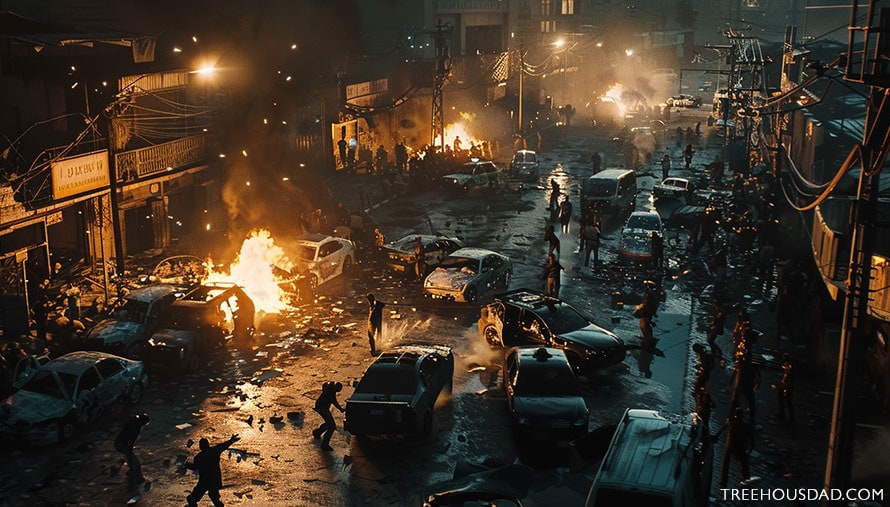
Those that survive the 1st year will have already been prepared, had a plan, and made smart alliances. Here’s what I think would work as a checklist to survive an EMP attack for more than 1 year.
![]()
EMP ATTACK CHECKLIST
Preparation, Plan, Alliances
EMP Preparation
Depending on where you live (City, Suburb, Rural) and what the climate is, you’ll need to alter this list. I’m in Hawaii, so I don’t have to worry about freezing cold, or big city issues, but a lot of what I share below is good for anyone.)
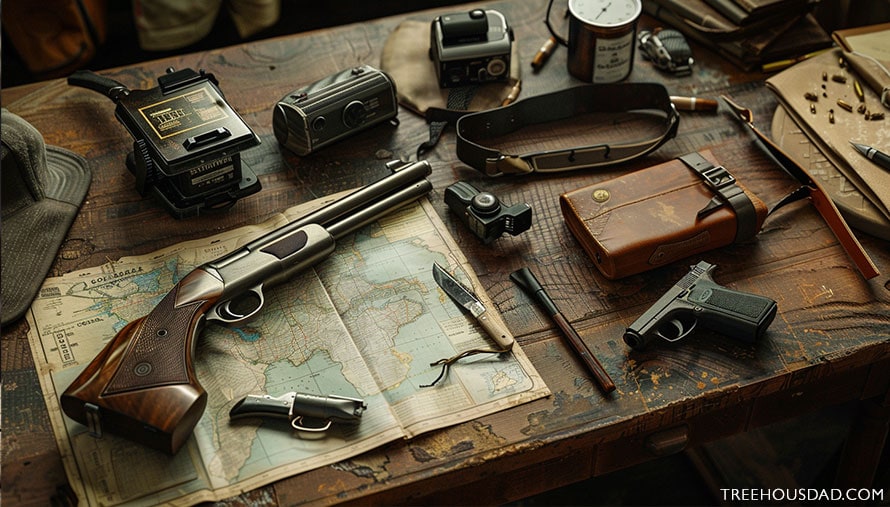
PROTECTION
- Shotgun – The best way to scare off intruders. The sound and the ability to hit something makes it a powerful took without taking a shot.
- Knife/Handgun – Something to have with you at all times.
- Distance/Perimeter – Keeping your family away from potential threats is key. If you can get somewhere that has easily delineated and monitored borders, you’re better off.
- Communication – Having 2-way walkie-talkies is key. If you separate from your group, you can call for or respond with help.
- Alliances – There’s both safety and danger in numbers. Find people you trust and are close that can group together for protection. If you’re out hunting deer, you want trustworthy people to watch your family.
PLEASE lock up your weapons and keep your kids away.
We don’t need a fatal mistake before a potential attack.
FOOD/WATER
WATER – A clean water supply and/or portable water filters or purification tablets. You’ll need containers too (you can buy a bathtub container lining that keeps it clean and is pretty cheap.) There’s a good chance that water pumps delivering to your house could be disabled. Having a natural source or stored water will help you get through the beginning. In a pinch, bleach and/or baking soda is worth having on hand too.
FOOD – I like the idea of having 3 batches of food at all times:
- 1st Batch – Items that spoil sooner and that we like to eat. Food we can hit up before anything else. I’m not talking about everything in the fridge and freezer, which you’ll go through asap, but dry or canned items that you store. If you eat organic, you can buy it for this batch since you’ll be eating it and replenishing it.
- 2nd Batch – All the items you need to live that last 5-10 years. This is the stuff you’ll keep an eye on and replace. Non-organic survival food that’s cheap and you’d rather not eat. You’ll be donating it before the expire dates and getting a new batch when needed.
- 3rd Batch – 10+ years and all the items that never expire, like vinegar, honey, salt, etc… This is a batch you don’t really need to keep an eye on. If 10+ years go by, and you want to replace items, you can, but most everything that has an expiration of more than 10 years usually lasts A LOT longer. You’ll lose nutrient value and taste, but it’ll do in a pinch.
How much food do I need?
Everyone’s different, so this is a tough question to answer. The average adult male requires about 2,500 calories per day, but this can vary based on age, activity level, and other factors. Here are some estimates for 1 adult to survive comfortably for 1 year:
- Canned/Dried Fruits and Veg – 400 quarts or 110 lbs
- Legumes – 80 lbs
- Canned/Dried Meat – 40 lbs
- Fats/Oils – 30 lbs
- Grains – 350 lbs
- Dairy – 20 lbs
- Salt – 5 lbs
- Vinegar – 1 gallon
- Honey – 5 lbs

Here’s a breakdown of some of these essentials:
Grains
- White Rice – Can last 25-30 years or more when stored properly in airtight containers and a cool, dry place.
- Dry Pasta – Has a shelf life of up to 30 years when stored in airtight containers away from moisture.
Legumes
- Dried Beans – Can last up to 30 years when stored in a cool, dry environment. They are an excellent source of protein and fiber.
- Lentils – Also have a long shelf life and are another good source of protein and essential nutrients.
Canned Goods
- Canned Vegetables and Fruits – Generally last at least 1-5 years past their printed date if stored in a cool, dark place. High-acid foods (like tomatoes) last about 18 months, while low-acid foods (like green beans) can last up to 5 years or more.
- Canned Meats – Such as chicken, tuna, and beef, can last 2-5 years or longer if not damaged and stored in a stable, cool environment.
Powders and Dried Foods
- Powdered Milk – Can last 20 years or more when stored in airtight containers with oxygen absorbers.
- Dehydrated Fruits and Vegetables – When properly dried and stored, they can last 5-10 years or more.
Fats and Oils
- Ghee (Clarified Butter) – Can last up to 10 years or more unopened, thanks to the removal of water and milk solids.
- Coconut Oil – Known for its long shelf life of 2-5 years due to its high saturated fat content. Some sources claim it can last even longer if stored properly.
Other Essentials
- Honey – Known for its virtually indefinite shelf life due to its low moisture content and high acidity. Archaeologists have found pots of honey in ancient tombs that were still preserved after thousands of years.
- Salt – Essential for flavor and food preservation, salt lasts indefinitely and can also be used to cure meats.
- Vinegar – Especially white vinegar, which can be used for cooking and cleaning, has an almost indefinite shelf life.
Meats
- Dried Meats – Dried meats like jerky can last several months to over a year when properly dried and stored in cool, dry conditions. Vacuum sealing can extend their shelf life by protecting them from moisture and air. They offer a convenient, high-protein food source without the need for refrigeration. You can smoke or salt meat to keep it longer.
- SPAM – We love our spam here in Hawaii. The cans we have last around 2-3 years. SPAM has everything you need: protein, fat, salt.
It’s important to store these foods in proper conditions to maximize their shelf life. This includes keeping them in airtight containers, in a cool and dark place, and using oxygen absorbers for certain items. Regularly rotating your stock and checking for signs of spoilage will also help ensure your survival food remains safe to eat. Also, make sure to keep it somewhere that looters can’t find it.
BARTER
Initially, money might be useful, but as time goes on, its value will diminish as people lose interest in paper currency. You should have some cash reserves, just for the beginning. It’s wise to stockpile essential items such as extra medication and food, as well as luxury goods like alcohol and cigarettes that go beyond basic survival needs. Based on my understanding from the book, items that can cause addiction are likely to become extremely valuable.

MEDICATION
Having some antibiotics on hand is a good idea. And, of course, if you require medications to survive, it’s crucial to have a surplus in a stored environment that will allow it to keep.
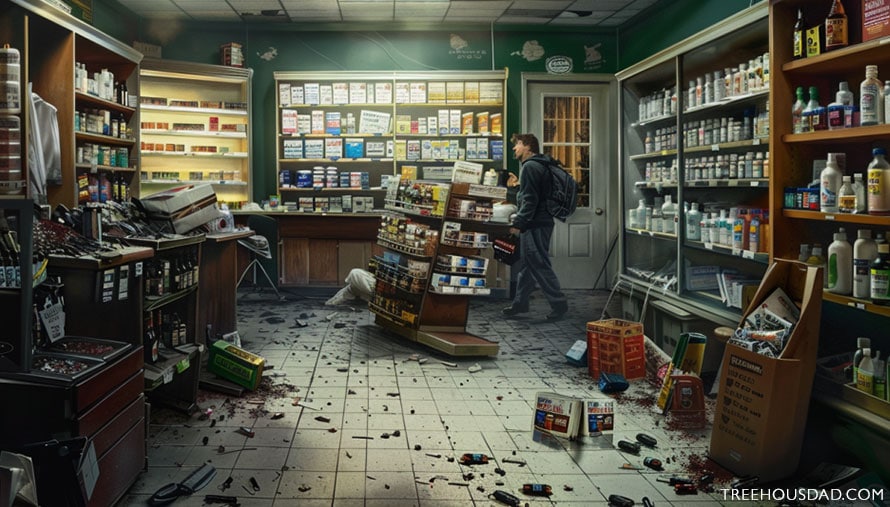
TOOLS FOR LONGEVITY
Some items will help keep you going through the first year and through the restructuring.
- Rifle – If you’re in an area to hunt, do it. Just make sure you’re not wasting meat and have everything you need to not only dress the animal quickly but to dry/salt/store the meat. Don’t kill a cow and only eat its ears.
- 2-way radios – There will be times when you need to separate from your group. Communication keeps us safe.
- Solar Generator – Having electricity will be very useful moving forward. Recharging batteries, light, and communications all hinge on this long-term.
- First Aid – antibiotic ointment, bandages, needle, and thread, etc… Having hydrogen peroxide and baking soda is of value too.
- Hygienic Supplies – Remember that infection will be a killer once available prescriptions are spent.
- Batteries – If you can get rechargeable batteries, more power to you.
- Solar Lights, Candles, Flashlights – Light will be key at night (and in dark buildings during the day) for protection and remaining productive.
- Battery or Solar Radio – Having communication with the world is important if there are any updates. Satellite phones might work too.
- Duct Tape – Because when all else fails, you can use it for almost anything.
- Faraday Bag – A Faraday bag shields electronic devices from EMP (Electromagnetic Pulse) attacks by blocking electromagnetic fields. Something to hold your electronics during the attack. Keep that stuff in there until afterward.
- Books – Herbal, medical, and local plants. Also for fun reading.
TRANSPORTATION
As you now know, most cars won’t function. That means only a few older, non-computerized vehicles will be running (until gasoline goes bad), and manual transport will be key. A bicycle with a caring capacity is a good idea. If you can get puncture-proof tires, or at least spares, that’s even better. Having a bike trailer would be a step up (for transport of other people and supplies.)
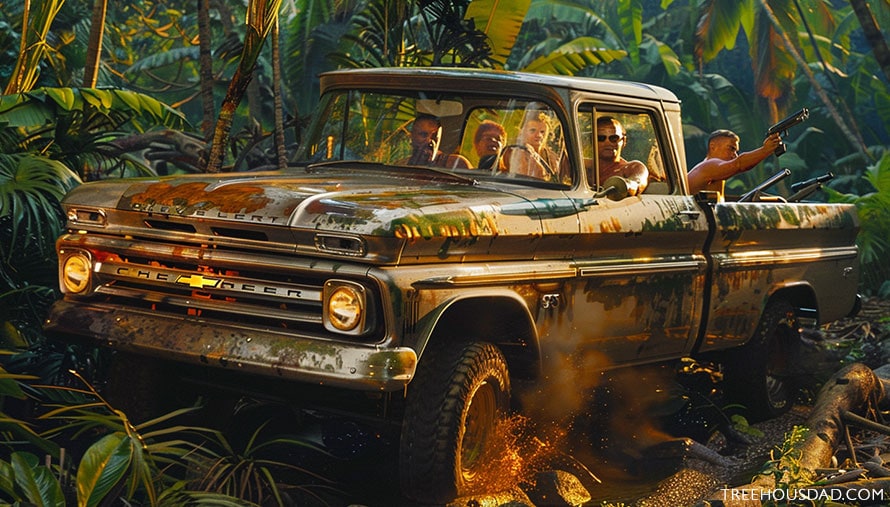
LEADERSHIP
Having leaders in your group who specialize in survival and defense is essential. These roles can be divided among multiple people, with responsibilities split between the two areas for effective management. Keeping order and taking orders will be crucial. Divisiveness can ruin the chances of survival.
Developing strict rules will help. Ex. What is your hard rule for handouts? If the group has a surplus of food, water, and supplies and knows it can maintain itself, how much can you give away when people come? And how is it given away? Or do you turn everyone away in order to maintain boundaries and keep people from camping at your borders until desperate enough to attack? New laws need to be developed and policed.
Survival Alliances
On that note, building a trusted group to work with while moving through the upcoming year is a complicated yet important step. You need to find people who have also prepared, have similar values, and are willing to defend your family by any means. No family of 4 can hold off 50 hungry, desperate people for long enough.
EMP Plan
It’s important to have a plan for when it hits the fan.
LEAVE – A lot of people have bug-out bags, which allow you to move quickly, but you also have to have a place to go! If you do, get ready for a quick exit. The faster the better.
STAY – For those staying put, it’s important you have what you need, protection to keep it, and the kind of nearby alliances to remain. This needs to be well-thought-out.
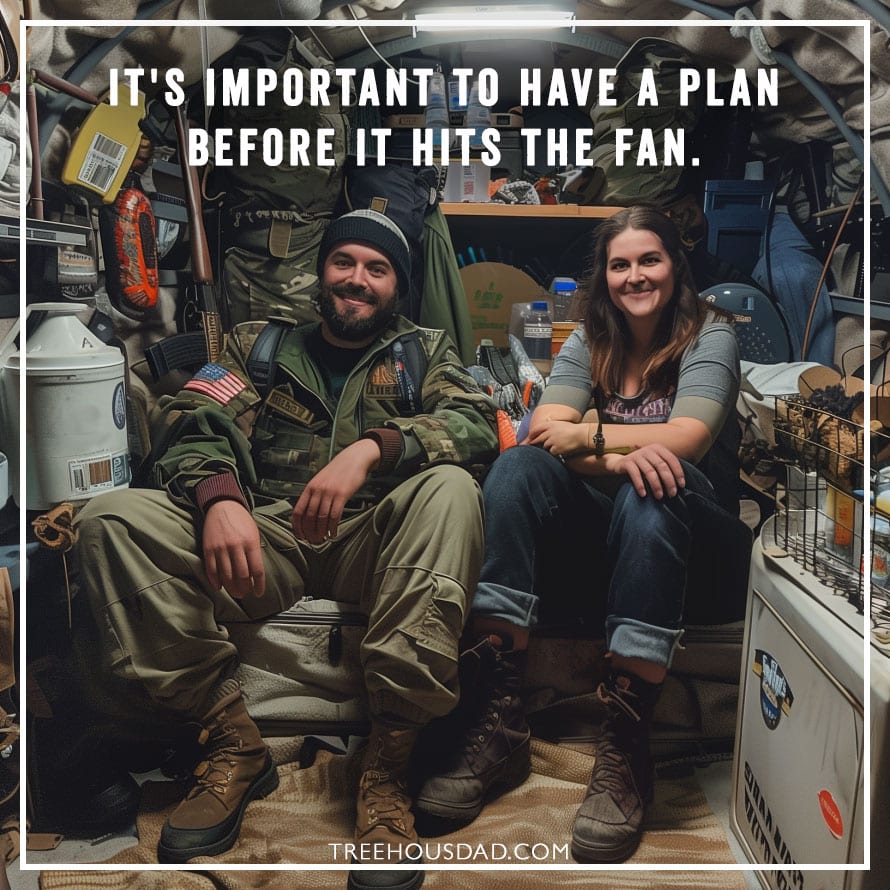
![]()
THE EMP ATTACK NOVEL
One Second After is a gripping post-apocalyptic novel by William Forstchen, published in 2009. The story unfolds in the small American town of Black Mountain, North Carolina, and chronicles the life of John Matherson and his community in the aftermath of a devastating Electromagnetic Pulse (EMP) attack. This attack, which occurs without warning, instantly cripples all electronic devices across the United States, thrusting the country back into the dark ages.
As society collapses around him, Matherson, a former military officer and college professor, must navigate the challenges of a world without power. The novel explores themes of survival, community resilience, and the struggles to maintain civilization in the face of chaos. It delves into the impacts of the EMP on every aspect of life, from food and medicine shortages to the breakdown of social order and the rise of lawlessness.
Through its vivid storytelling and exploration of real-world vulnerabilities to EMP attacks, “One Second After” offers a chilling and thought-provoking look at the fragility of modern society. The novel has been praised for its detailed research and has helped spark discussions on national security and emergency preparedness. It is the first book in a series that further explores the rebuilding of America in a post-EMP world. (5 Years After just came out!)
![]()
EMP FAQs
What is an EMP?
An Electromagnetic Pulse (EMP) is a burst of electromagnetic radiation that can occur naturally, such as from a solar flare, or be generated artificially through nuclear explosions or specialized non-nuclear devices. EMPs are characterized by their ability to disrupt, degrade, or damage electronic equipment and electrical systems due to the rapid change in magnetic and electric fields.
How does an EMP bomb work?
An EMP bomb, whether from a nuclear explosion or a non-nuclear device, generates a high-intensity electromagnetic field in a very short duration. In the case of a nuclear EMP, the detonation of a nuclear weapon at high altitude generates gamma rays that interact with the Earth’s atmosphere, producing high-energy electrons. These electrons, in turn, create a fast, intense electromagnetic pulse that can affect a wide area. Non-nuclear EMP weapons use conventional explosives or other methods to generate a similar, but typically more localized, electromagnetic pulse.
Can an EMP kill people?
Directly, an EMP itself is not lethal to humans. The pulse consists of electromagnetic radiation that does not harm the human body’s biological systems. However, the indirect effects of an EMP, such as disrupting medical devices, causing accidents by disabling electronic systems in vehicles, or impacting critical infrastructure, could potentially lead to situations where lives are at risk.
Why do EMPs destroy electronics?
EMPs destroy electronics by inducing high voltages and currents in electrical circuits faster than the circuits can handle. This sudden surge can fry semiconductor components, melt circuit traces, and cause permanent damage to electronic systems. The damage is particularly severe in microelectronics found in modern devices like smartphones, computers, and critical infrastructure control systems, where components are miniaturized and densely packed.
Can an EMP penetrate the ground?
The ability of an EMP to penetrate the ground is limited. Electromagnetic fields, especially those at the higher frequencies generated by EMPs, tend to be absorbed or reflected by the Earth’s surface rather than penetrating deeply into the ground. However, underground electronic systems may still be vulnerable if they are connected to surface infrastructure that conducts the EMP’s electromagnetic energy to them.
Will an EMP attack damage solar panels?
An EMP attack can potentially damage solar panels. While the solar cells themselves might not be directly susceptible to the EMP, the electronic components used to manage and convert the solar energy (such as inverters and controllers) are vulnerable to the induced currents and voltages, potentially leading to system failure.
What can be used to mitigate EMP attacks?
Mitigating EMP attacks involves several strategies aimed at protecting critical electronics and infrastructure:
- Hardening – Enhancing the resilience of electronic systems and infrastructure to withstand EMP effects, either by using EMP-resistant components or by designing systems to limit the effects of induced currents and voltages.
- Shielding – Encasing sensitive electronics in Faraday cages or using other electromagnetic shielding materials to block or attenuate the EMP.
- Redundancy – Implementing backup systems and components that can be brought online in the event of an EMP-induced failure.
- Isolation – Designing systems with electrical isolation measures to prevent the propagation of damaging currents and voltages from an EMP.
- Planning and Preparation – Developing emergency response plans that include provisions for an EMP event, such as maintaining analog backups for critical digital records and ensuring the availability of manual overrides for automated systems.
![]()
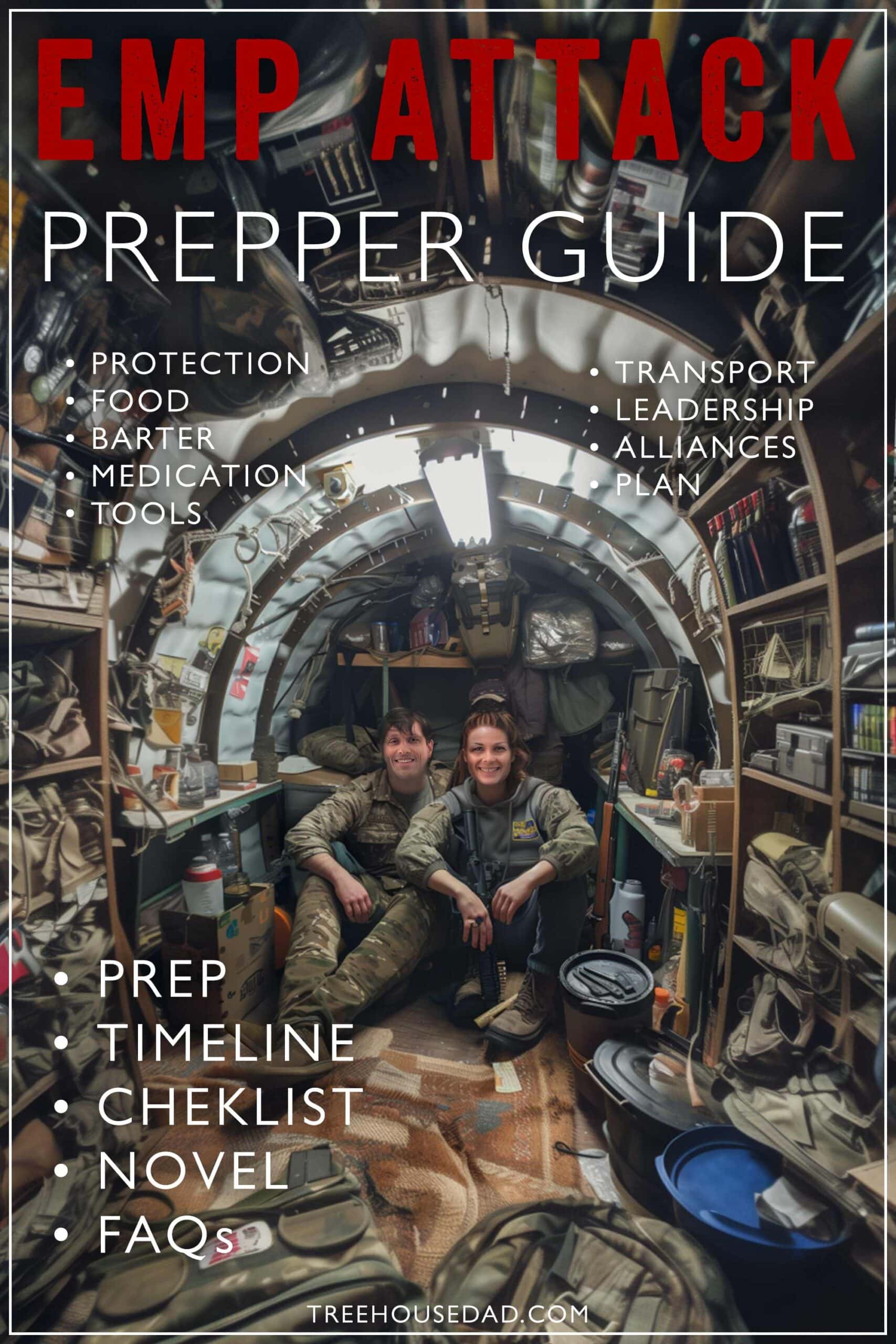
And, YES, this is the worst Photoshop job I’ve done in a long time. I don’t get paid for this site, so I got a little sloppy rushing it.
These strategies can be applied individually or in combination to protect against the potential threats posed by EMP events. PLEASE, let me know your thoughts in the comments. Did I miss anything? What do you think would happen differently?

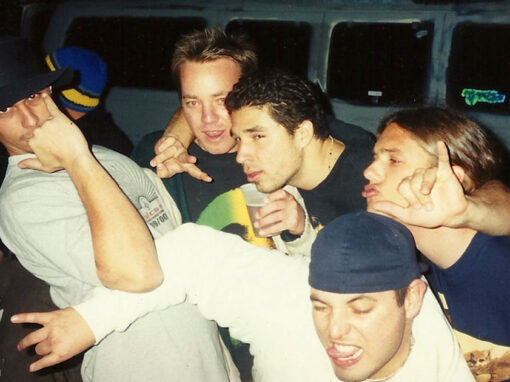
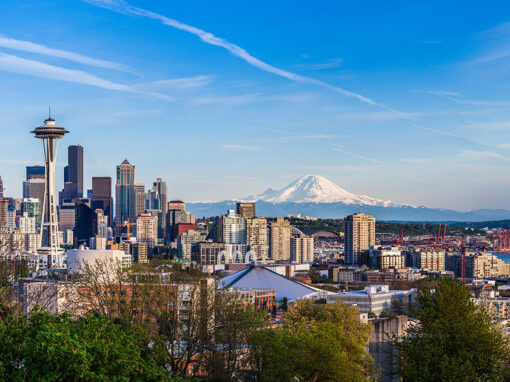


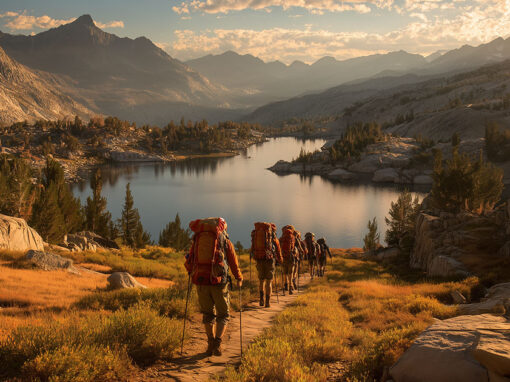


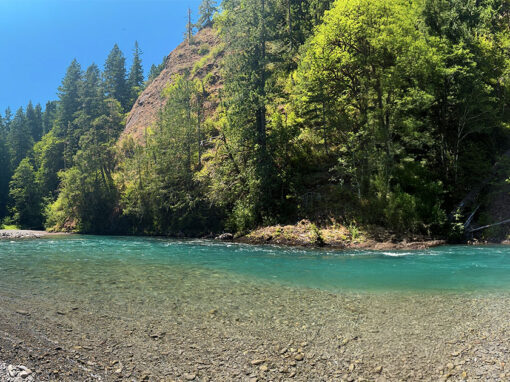
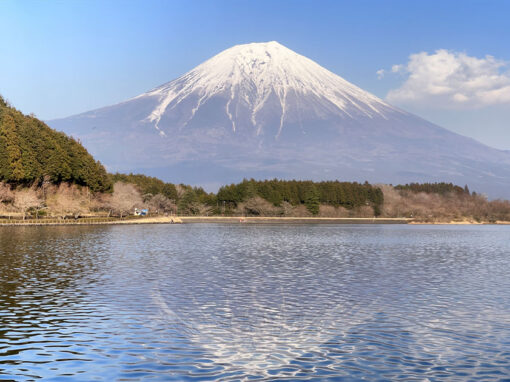
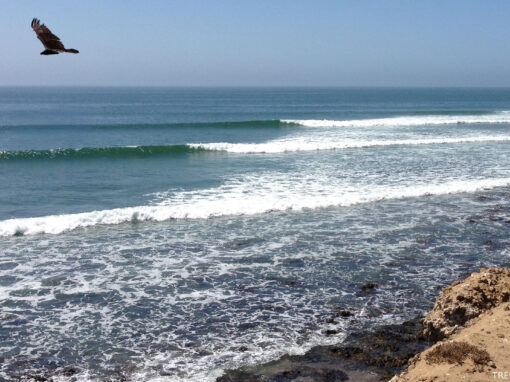
Scary stuff but vary help full thank you
One Second After, One Year After–two books we found riveting, frightening, truthful (we believe). Good job on your article, Treehouse Dad. Our problem is, we have no one around us who aligns with our belief of what’s coming and being prepared for it. We are two seniors. pretty much on our own. We have friends who agree with us, but we are spread out–we have invited others we trust to move here to our property (25+ acres) and build a small home or buy one of the sheds that can be insulated and adapted. So far, not one person has taken us up on our offer. There is strength in numbers–we are but two but we also have each other and the will to survive!
As for bartering, we suggest alcohol, tobacco, salt, sugar, matches, candles.
Good luck to all!
Keep trying to find neighbors you can at least have some shared plans with. Good luck and thank you for sharing!
We are seniors also and I we had a offer like that we would be there in a heart beat.
I have to question…Perhaps it is all in part of your journey, but why would you want to and what is the purpose of living/surviving in such a world? At this point, I’d rather just merge with the Cosmos/God/the positive power that is and let it be
I assume you don’t have children. You bring up a good point on “Purpose.” At our core, our purpose is to survive. That’s our animal instinct. Of course, that’s not enough for a good life. I believe our base purpose past survival is to live an enjoyable life while giving and sharing joy with/to others. History proves that this can happen even in the most bleak times. And once things shake out after an EMP attack, life would become much simpler again, and a new form of society would be put in place. For those that plan and adapt, a very happy life could be found for you and your future generations. There’s no telling what that would look like, but I would want to find out instead of giving up.
Good guide—an EMP is one of those things most people don’t think about until it’s too late. I’ve been trying to learn more about how to prepare for it, and I’ve found some great free prepping and survival eBooks.There’s a lot of info on EMP preparedness, off-grid living, and other SHTF scenarios that’s worth checking out.
Thank you for all of the wonderful information! Having a plan of action is comforting these days. I appreciate you! Much Love…
Aloha Caroline. I do these mostly for myself, to enable my organizing my own thoughts and prep. So when someone reads it and comments like this, it means a lot to me! I forget sometimes this is public and other people get something out of it! Mahalo!